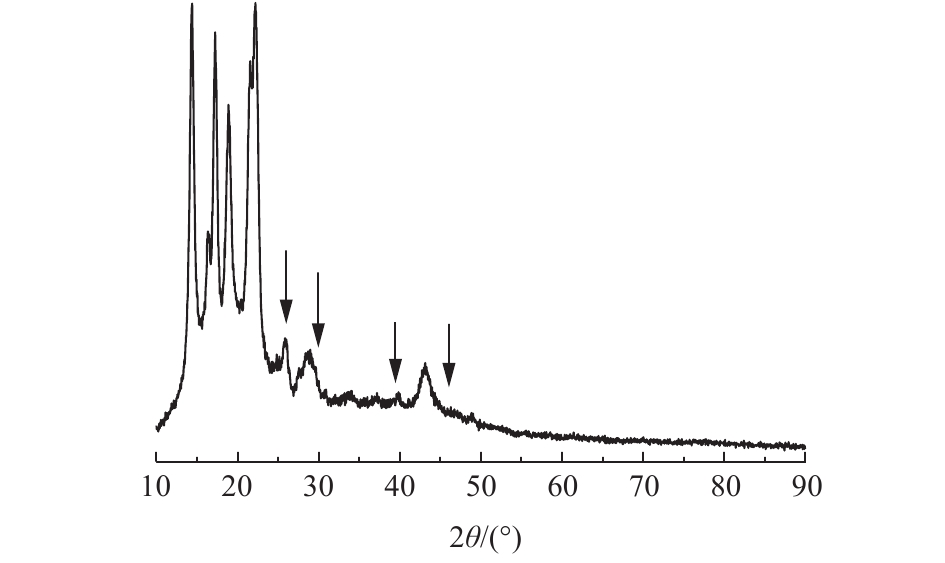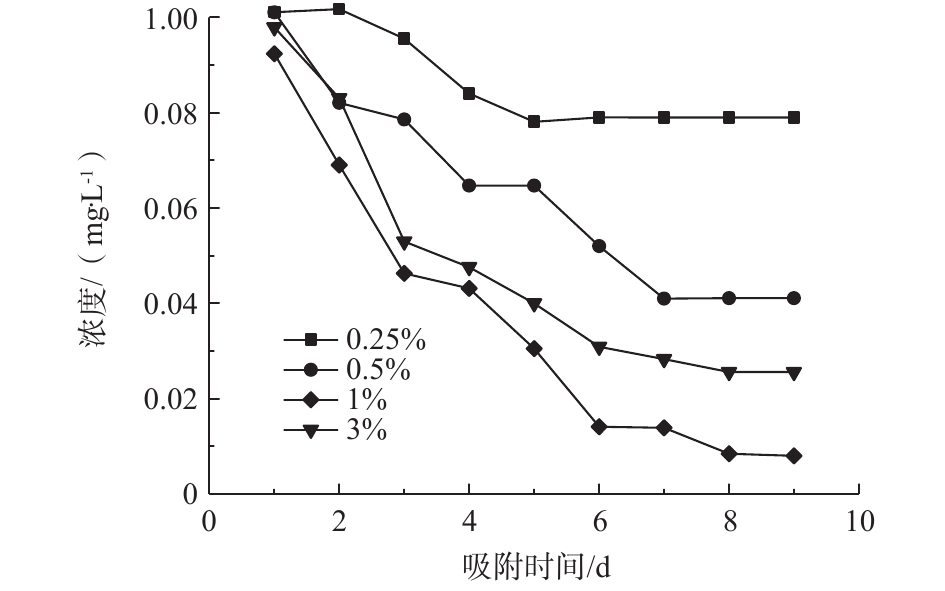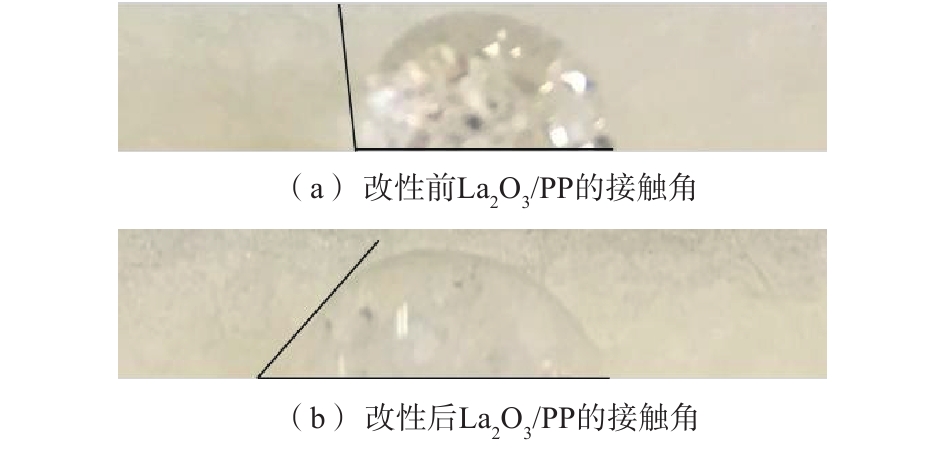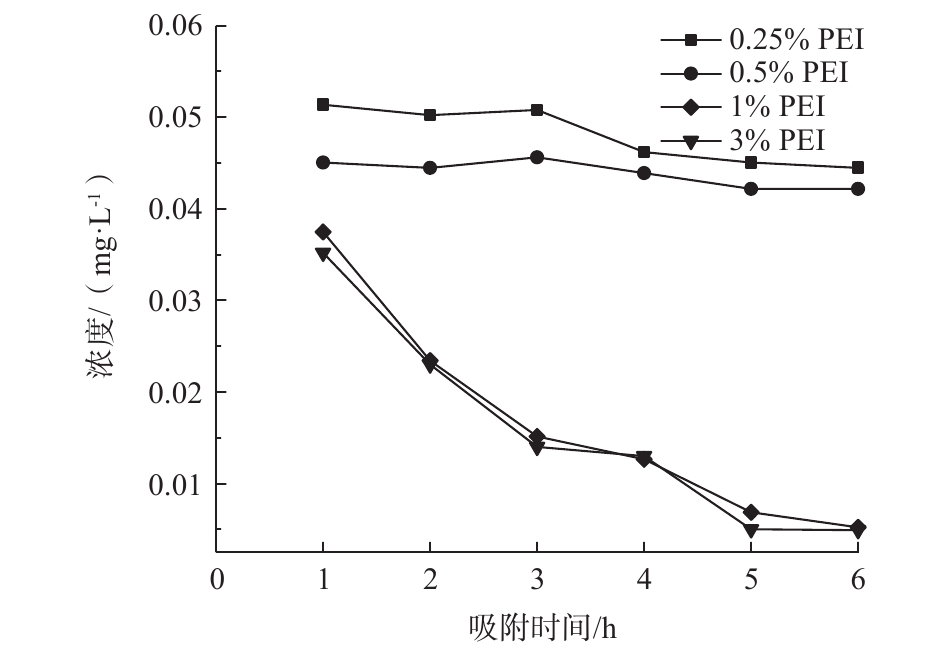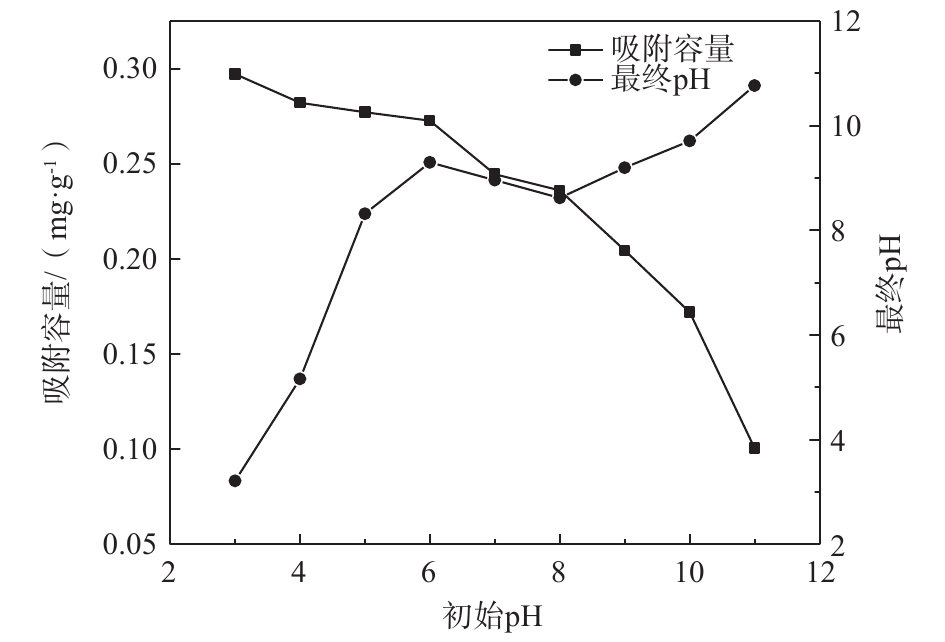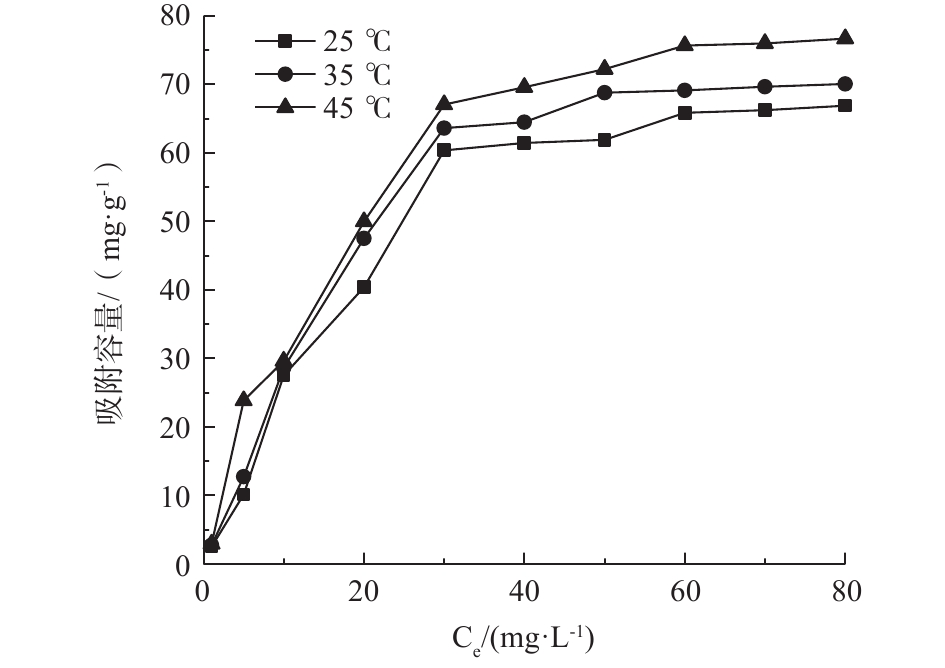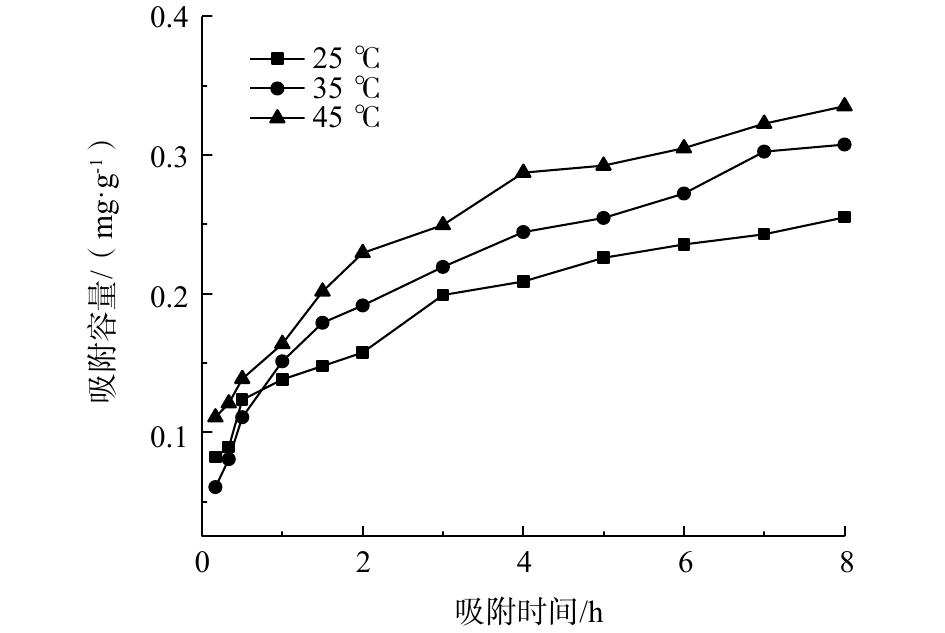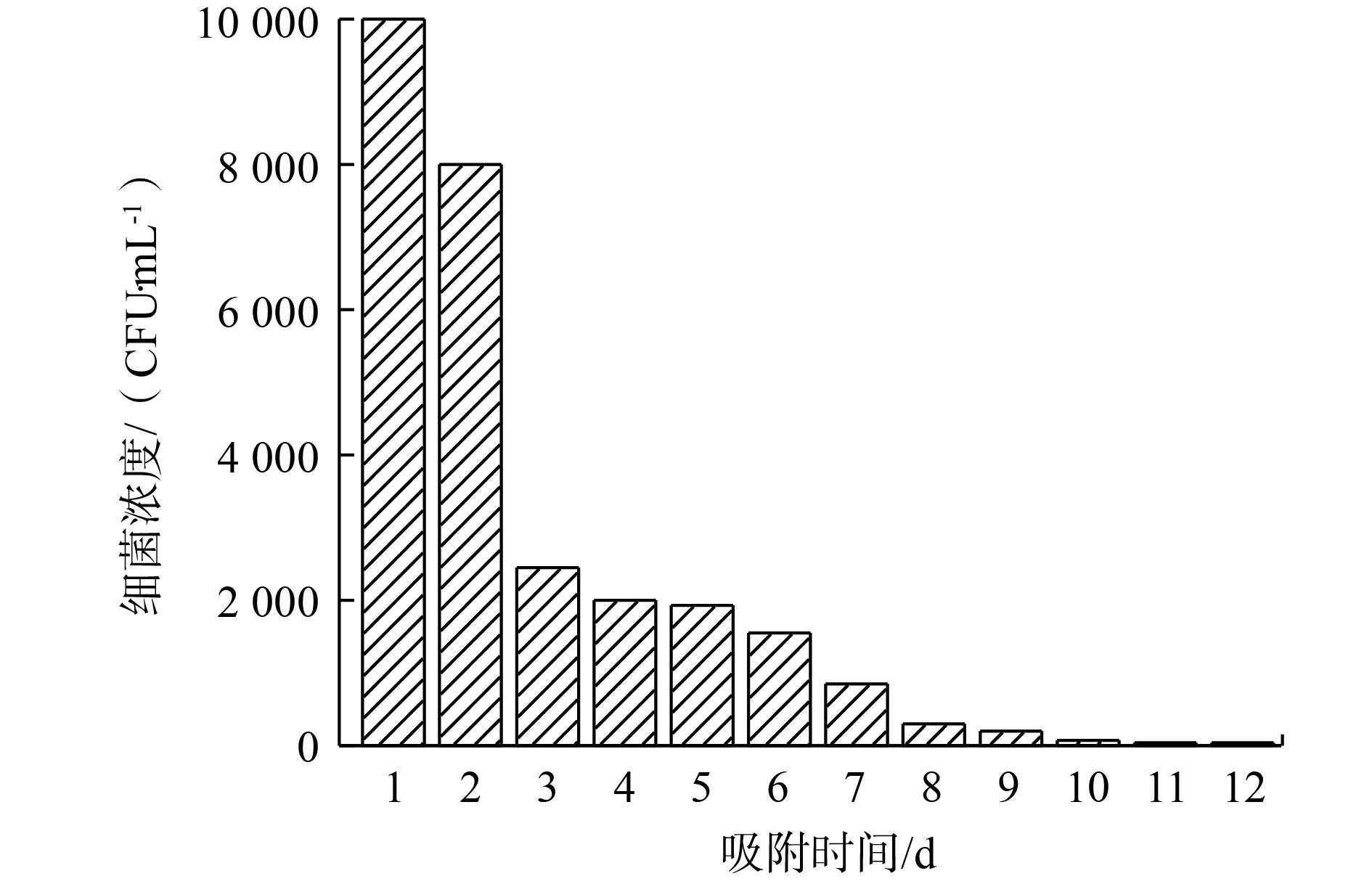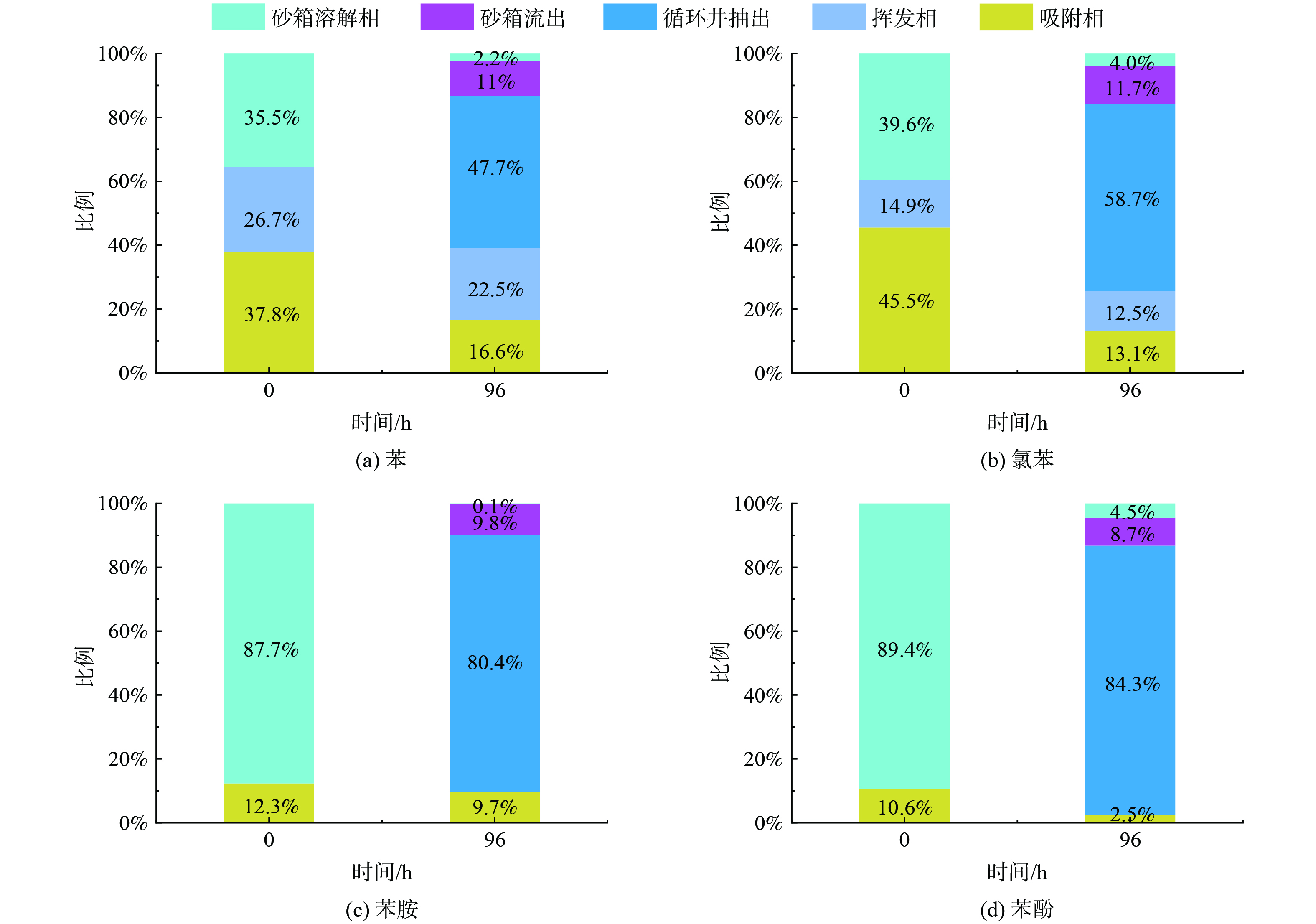-
地下水循环井 (groundwater circulation well,GCW) 是一种地下水原位修复技术,其原理是通过井内曝气或者抽注水在循环井周围形成循环流场,将一定范围内的污染物捕获进循环井并去除,主要用于挥发性和半挥发性有机污染的修复工作,是在原位空气扰动 (air sparging,AS) 技术和抽出处理 (pump & treat,P&T) 技术上的改进[1-2]。循环井技术有效避免了传统抽出处理技术能耗高、扰动大的缺陷,同时不局限于复杂多样、难以控制的含水层性质,为传统地下水原位修复开辟了新思路[3-4]。
循环井在1974年首次由Raymond博士提出并应用于场地研究[5]。自20世纪90年代起美国等发达国家将地下水循环井技术应用于污染场地的原位修复,包括三氯乙烯等挥发性污染物污染场地[6-7]。LAKHWALA等[8]在纽约州北部的一个超级基金场址运行了GCW系统,对同时受到氯化和非氯化有机化合物混合物影响的土壤和地下水进行原位修复,污染物浓度平均分别减少了52%和88%。BLANFORD等[9]使用羟丙基-β-环糊精作为表面活性剂来增强GCW对低溶解度有机污染物的去除,运行后将三氯乙烯的去除效率提升至94%。随着循环井技术的不断发展进步,研究人员发现抽注水驱动的循环井比曝气驱动的循环井的影响半径更大,更适合大范围的污染修复与水流控制,但抽注水循环井技术同样存在修复后期污染物拖尾的问题。白静等[10]通过二维砂箱实验模拟循环井对硝基苯的去除,结果表明循环井对硝基苯的去除经历了快速去除-波动去除-浓度拖尾这3个阶段,在14 h内污染物平均浓度从247.0 mg·L−1降低到了157.1 mg·L−1,去除率为63.6%。WANG等[11]通过纳米CaO2联合O3强化循环井修复土霉素污染的地下水研究中发现,由于被土壤吸附的污染物发生解吸,处理过程出现了污染物浓度升高和拖尾现象。
有机污染物的挥发性、溶解性等对其生物降解及富集行为是一个重要的理化参数[12]。同时污染物的密度、粘度和饱和蒸汽压对其迁移转化和气液相平衡也是很关键的参数[13]。研究表明循环井技术对溶解度高、挥发性强的污染物有很好的修复效果,而对难挥发、低溶解性的有机污染物修复效果较差[14]。目前循环井的研究主要关注循环井的影响半径、抽注水流量、循环井结构等对修复过程的影响[15-16],尚缺乏循环井运行过程中多相污染物在地下环境中迁移转化规律的研究。因此针对地下水中有机污染溶解相、挥发相以及吸附相共存的现状,研究循环井运行过程中污染物的相态转化与迁移规律至关重要[17]。
基于此,本研究以地下水中常见的苯胺、苯酚、氯苯和苯四种苯系污染物为研究对象,其中苯酚与苯胺挥发性较弱,苯与氯苯挥发性较强,并且几种污染物在水中的溶解性也有很大差异[18-19]。通过室内砂箱实验研究几种污染物在循环井运行过程中挥发相、溶解相和吸附相的含量变化,并通过不同相态之间的含量变化分析在运行过程中污染物相态之间的转化规律,为实际修复场地提供参考。
-
实验材料。选取河砂作为模拟介质,河砂购自河南信阳国通采砂场,去除杂质并筛分,得到粒径范围为0.1~0.25 mm的细砂介质,风干备用。选取挥发性较强的苯 (C6H6) 、氯苯 (C6H5Cl) 以及挥发性较差的苯胺 (C6H7N) 、苯酚 (C6H5OH) 为目标污染物,纯度均为分析纯。其它试剂主要包括二氯甲烷 (CH2Cl2) 、甲醇 (CH3OH) 、碳酸钠 (Na2CO3) ,其中二氯甲烷为色谱纯,其它均为分析纯。实验所用溶液均用超纯水配置。
实验仪器。气相色谱 (GC-2010 Pro,岛津企业管理有限公司) ,高效液相色谱 (HPLC-1260 Infinity II,安捷伦科技有限公司) ,蠕动泵 (Senz-310B,北京易则佳科技有限公司) ,高速离心机 (HC-1518,安徽中科中佳科学仪器有限公司) ,磁力搅拌器 (OS20-S型,大龙兴创实验仪器有限公司)
-
实验装置。采用室内砂箱模拟实验探究循环井水力激发下污染物的相态分布规律。实验模拟装置如图1所示,砂箱尺寸为120 cm×6 cm×40 cm (长×宽×高) ,正面分布50个取样口,共5排10列,每列间隔10 cm,每行间隔8 cm。将长45 cm外径4.5 cm的循环井置于砂箱中心位置,循环井的抽注水口分别连接蠕动泵以精准控制抽注水流量并实现水流循环。装填0.1~0.25 mm的细砂并饱水以模拟含水层,细砂含水层的孔隙度为0.39,渗透系数为7.5 m·d−1。由于循环井在运行过程中会抬升井中及周围地下水水位,因此在实验过程中控制模拟含水层厚度约为36 cm以防止循环井运行时地下水溢出,所以在砂箱的顶部存在厚度约为4 cm的模拟包气带,并在砂箱上部进行密封处理以防止实验过程中污染物的挥发。
实验方法。分别配置浓度约为100 mg·L−1的苯、氯苯、苯胺、苯酚污染物溶液,通过蠕动泵从左侧通入砂箱以模拟污染含水层,污染饱和后切断污染并开始运行循环井,循环井采用下抽上注的正循环模式。根据真实地下水流速范围,循环井运行过程中控制地下水流速为0.111 m·d−1,抽注水流量为12.75 mL·min−1 (在此流量下循环井流场刚好可以覆盖整个砂箱) 。在循环井的运行过程中在不同时刻取样分析溶解相、挥发相以及吸附相污染物的浓度变化,探究循环井水力激发下多相污染物的相态分布规律。
①溶解相污染物的分析:运行后第6、12、24、48、96 h时,分别在砂箱正面取样口、循环井的抽出口以及砂箱的溢流口取样,利用气相色谱及液相色谱分析砂箱中溶解相污染物的浓度分布。
②挥发相污染物的分析:循环井运行后第6、12、24、48、96 h时,分别在模拟包气带不同位置处取气体样品,利用吸收液 (二氯甲烷/甲醇) 将气体样品中污染物吸收固定,利用气相色谱及液相色谱分析砂箱中挥发相污染物的浓度分布。
③吸附相污染物的分析:在循环井运行96 h后,关闭循环井的注水口,通过循环井的抽水管将砂箱的水抽干,并且在每个取样口对应的位置处取土样,检测吸附相污染物的含量及分布。为准确对照循环井对不同相态污染物的修复效果,另设对照实验,在相同的实验条件下,分别在污染饱和后对模拟含水层中的溶解相、挥发相以及吸附相进行采样,对比探究循环井运行前后多相污染物在砂箱中的相态分布规律。
-
图2给出了循环井运行后溶解相苯、氯苯、苯胺、苯酚的浓度分布变化,由图2可知,在循环井的水力激发作用下,循环井附近溶解相污染物的浓度逐渐降低直至低于检测限,随着修复时间的增加,修复区域自循环井附近持续向周围拓展,直至覆盖整个砂箱。当修复时间达到96 h时砂箱中苯、氯苯、苯胺、苯酚的去除率分别为93.8%、89.9%、99.8%和95.0%,分别有超过70.4%、59.3%、72.3%和68.3%的区域污染物在检测限 (0.01 mg∙L−1) 以下,说明循环井的水力激发作用对溶解相污染物污染具有较好的修复效果。
对比发现在循环井运行过程中,循环井右侧污染物的降低速度明显高于左侧。以运行24 h为例,循环井右侧苯、氯苯、苯胺、苯酚的平均浓度仅为2.4、0.5、15.5、4.2 mg·L−1,而左侧却高达3.2、8.8、48.0、44.0 mg·L−1,分别相差1.3、17.6、3.1、10.5倍,主要原因是循环井的水力环流会受到地下水水流的影响。使用COMSOL软件针对有无地下水流动条件下的循环流场进行模拟,模拟结果如图3所示,在没有地下水流动的情况下,循环井的流场左右呈对称分布,且影响半径较大;而在地下水流的作用下,循环井的流场发生了明显的改变。在循环井的左侧,循环井的水力激发方向与地下水流方向相反,影响区域被严重压缩,导致一部分区域的污染物不受循环井流场控制,不利于污染物浓度的下降。而在循环井的右侧,循环井的水力激发方向与地下水流方向相同,能够加快污染物的移动,使污染物的浓度快速降低。
由此可见溶解相污染物的去除受控于循环井的流场,而循环井的影响半径拓展符合指数上升规律,由此推测溶解相污染物浓度在循环井水力激发下的衰减符合指数衰减规律,因此采用指数函数对溶解相污染物的平均浓度随时间的变化规律进行拟合,拟合结果如图4所示。由图4可知,4种溶解相污染物的平均浓度均符合指数衰减规律,说明随着修复时间的增加,污染物的修复效率会逐渐降低,产生这种现象的原因可能有2点:首先,循环井流场的非对称结构导致不同位置处的水力激发强度有所不同,右侧污染物的去除明显高于左侧,左侧污染物的修复需要更长的运行时间;其次,到了循环井修复的后期,随着溶解相污染物浓度的降低,介质表面的吸附相污染物与赋存在含水层上方挥发相的污染物也会通过溶解等作用进入地下水中增加溶解相的浓度,导致修复效果变差。地下水修复后期的拖尾反弹现象是一种常见的问题,除低渗透区污染物反向扩散形成外,地下水介质中的吸附相解吸以及包气带挥发相吸附溶解也会导致拖尾反弹现象的出现。目前大多数研究仅仅只关注如何提高循环井运行过程中溶解相污染物的去除效率,而多相污染物尤其是吸附相及挥发相的修复并未引起足够的关注。但在循环井的水力激发作下,溶解相、吸附相、挥发相等多相污染物的平衡会遭到破坏,势必会重新分配。而污染物的溶解性、挥发性等势必会影响污染物相态之间的转化效率,也决定了是否需要耦合其它修复技术对循环井的修复效果进行强化。因此明确循环井水力激发下多相污染物的迁移转化规律是评估循环井对含水层污染物修复效果及开展强化修复的重要前提。
-
图5给出了循环井修复前后苯、氯苯、苯胺、苯酚4种污染物各相占比变化。由图5可知,在循环井运行前氯苯在砂箱中吸附相和溶解相占45.5%和39.6%,另外14.9%以挥发相存在;苯在砂箱中吸附相占37.8%,溶解相占35.5%,26.7%以挥发相存在;而苯胺和苯酚主要是以溶解相存在于砂箱中,占比高达87.7和89.4%,吸附相分别占12.3%和10.6%,砂箱内几乎检测不出挥发相的苯胺和苯酚。
污染物在砂箱中的挥发量主要是受到污染物的饱和蒸汽压的影响,并且服从亨利定律[20]。其中在25 ℃下苯的饱和蒸汽压高达12.691 kPa,氯苯为1.596 kPa,而苯胺和苯酚仅为 0.089和0.046 7 kPa,不足苯的1%。因此砂箱中氯苯和苯挥发相所占比例比苯胺和苯酚高。而污染物在含水层介质中的吸附主要受到介质理化性质和污染物本身性质影响。有机污染物在含水层介质和地下水之间的吸附分配系数与其水溶性呈近似反比关系,与其辛醇-水分配系数呈近似线性关系[21],即水溶性越强,有机污染物在含水层介质表面的吸附量则越少。20 ℃时苯在水中的溶解度约为0.5 g·L−1[22],氯苯0.21 g·L−1,苯胺为36.0 g·L−1,苯酚83.6 g·L−1,辛醇水分配系数苯为147.9[23],氯苯为691.8[24],苯胺为8.7[25],苯酚为28.8[26],因此溶解相苯胺和苯酚的占比远高于苯和氯苯,而吸附相的苯和氯苯要远大于苯胺和苯酚。
循环井运行96 h后,此时污染物的溶解相组成包括循环井抽出、砂箱流出和砂箱剩余溶解相,砂箱中剩余溶解相占比苯、氯苯、苯胺和苯酚分别降到了2.2%、4.0%、0.1%和4.5%,由图5可以看出污染物溶解相去除率主要由循环井抽出贡献,抽出量分别占到了总量的47.7%、58.7%、80.4%和84.3%,溶解相总量占比分别为60.9%、74.4%、90.3%和97.5%。吸附相占比苯、氯苯、苯胺、苯酚在96 h后分别降到了16.6%、13.1%、9.7%和2.5%,对比运行前分别降低了56.1%、71.2%、21.1%和76.4%。对比循环井运行前可以发现,运行96 h后溶解相污染物占比有一个明显的提高,同时吸附相和挥发相占比对比循环井运行前均有所降低,因此可以推测在循环井运行过程中有一部分吸附相和挥发相污染物转化进入了溶解相。当溶解相的污染物浓度降低之后,一部分吸附在介质表面的污染物由于浓度梯度解吸进入溶解相,一部分在循环井水力激发的冲刷下解吸进入溶解相,但这一过程相对较慢,除水溶性最好的苯酚外,其它3种吸附相污染物的占比仍然保持在10%~20%左右,需要耦合其它技术进行强化修复。
在循环井开始运行后,循环井带动水流形成循环流场,在循环流场的水力激发下砂箱内部的压力发生变化。如图6的模拟结果所示,循环井运行之后注水区域附近压力显著升高。压力的增加会促进砂箱内部气液传质过程,加速污染物由挥发相向溶解相的转化;同时在循环井运行过程中砂箱中溶解相污染物的浓度迅速降低,在浓度梯度的作用下,挥发相污染物也有溶解进入水相的趋势,最终导致含水层上方包气带中的挥发相污染物浓度降低。但由于循环井本身主要是抽注水的水力激发作用,本身并不直接作用于挥发相,因此挥发相的去除效果要比溶解相和吸附相差的多,在96 h时挥发相占比氯苯和苯分别只降低了16.1%和15.7%,远低于溶解相及挥发相的去除率。
-
1) 砂箱中污染物以多相形式存在,循环井运行过程中注水区域污染物率先被去除,在地下水流存在的情况下,水流流出方向会比流入方向去除速率更快,并且在循环井影响区域内的不同污染物的溶解相含量降低均符合指数衰减规律。
2) 在整个运行过程中苯、氯苯、苯胺和苯酚的溶解相污染物去除率为93.8%、89.9%、99.8%和95.0%,吸附相去除率为56.1%、71.2%、21.1%和76.4%,氯苯和苯的挥发相去除率为16.1%和15.7%,即循环井的修复不具有同步性,对溶解相去除效果最好,吸附相其次,挥发相最差。
3) 在循环井水力激发的作用下,挥发相污染物由于砂箱压力变化与浓度差会进入溶解相与吸附相,吸附相污染物在水力冲刷和浓度梯度下解吸进入溶解相,导致循环井抽出溶解相的总量会高于初始溶解相污染物的量。
循环井水力激发下多相污染物的迁移转化规律
Migration and transformation of multiphase contaminant under hydraulic excitation by circulation well
-
摘要: 利用二维砂箱模拟实验,以苯、氯苯、苯胺和苯酚4种溶解性和挥发性不同的有机污染物为研究对象,分析循环井运行过程中溶解相、吸附相、挥发相的浓度变化,探究循环井水力激发下多相污染物的迁移转化规律。结果表明,循环井的水力激发直接作用于溶解相且污染物浓度呈指数衰减的规律,运行96 h后溶解相苯、氯苯、苯胺和苯酚的去除率为93.8%、89.9%、99.8%和95.0%。而吸附相和挥发相的污染物在浓度梯度的作用下迁移转化进入溶解相,再通过循环井的水力激发作用被去除。其中吸附相的迁移转化与污染物的溶解性有关,修复后苯、氯苯、苯胺、苯酚吸附相占比相对初始含量分别降低了56.1%、71.2%、21.1%、76.4%。而挥发相的迁移转化与污染物的挥发性有关,修复后氯苯和苯去除率为16.1%和15.7%。对比可知循环井的水力激发作用对溶解相的污染物具有最好的去除效果,其次是吸附相,挥发相最差。本研究成果可为循环井的场地修复设计提供参考。Abstract: Benzene, chlorobenzene, aniline and phenol with different soluble and volatile properties were taken as the target contaminant in a two-dimensional sandbox simulation experiment to analyze the concentration variations of dissolved phase, adsorbed phase and volatile phase during the operation of circulation well, and explore the migration and transformation rule of multiphase contaminants under the hydraulic excitation of circulation well. The results showed that the hydraulic excitation of the circulation well acted directly on the dissolved phase and the contaminant concentration decreased exponentially. After 96 h operation, the removal rates of dissolved benzene, chlorobenzene, aniline and phenol were 93.8%, 89.9%, 99.8% and 95.0%, respectively. The adsorbed phase and volatile phase contaminants are transferred and transformed into dissolved phase under the action of concentration gradient, and then removed by the hydraulic excitation of circulation well. The migration and transformation of adsorbed phase was related to the solubility of contaminants, and the adsorbed phase proportion of benzene, chlorobenzene, aniline and phenol decreased by 56.1%, 71.2%, 21.1% and 76.4% compared with the initial content, respectively. The migration and transformation of volatile phase was related to the volatility of contaminants and the removal rates of volatile chlorobenzene and benzene were only 16.1% and 15.7%. The comparison results showed that the hydraulic excitation of circulation well has the best removal effect on dissolved phase, followed by adsorbed phase, and the worst removal effect on volatile phase. This study can provide reference for site remediation design of circulation well .
-
随着国民生活水平的日益提高,与人民生活密切相关的《生活饮用水卫生标准》也更加严苛,饮用水质量不断得到改善。目前,生活饮用水面临的主要问题是输水管网带来的饮用水中生物安全隐患[1]。可同化生物有机碳(AOC)被普遍认为是饮用水生物稳定性的一个重要参数[2]。已有的研究[3]发现,磷是控制管网中饮用水微生物生长的重要因素,当饮用水中磷酸盐浓度低于0.01 mg·L−1时,显示出明显的细菌生长抑制作用[4]。因此,控制饮用水中磷含量是有效的控制细菌生长的重要手段之一。
与其他的除磷技术相比,吸附法具有占地面积小、稳定性强等特点,引起越来越广泛的关注[5]。在已有的研究中,以天然高分子材料[6]、碳基材料[7]、无机金属氧化物材料[8]、纤维材料[9]等作为改性材料吸附水中的磷均具有良好的效果。与其他材料相比,镧基改性材料[10]对磷酸盐的吸附容量高,吸附选择性强,且具有较好的生物安全性,在水体除磷领域备受关注[11]。
本研究以熔融纺丝法制备纳米氧化镧负载的聚丙烯纤维复合材料,再经聚乙烯亚胺改性制备成PEI/La2O3/PP纤维吸附材料,研究了其对饮用水中微量磷的去除效果,及对饮用水中细菌生长的抑制作用;考察了pH、共存离子等因素对磷吸附效果的影响;采用吸附等温模型、吸附动力模型对吸附机理进行了探讨;通过微生物实验,探究了饮用水中细菌生长与磷含量的关系,研究为控制饮用水中微生物的二次生长潜能提供了参考。
1. 实验部分
1.1 实验试剂与仪器
试剂:氢氧化钠(AR,天津市风船化学试剂有限公司)、盐酸(AR,天津市风船化学试剂有限公司)、磷酸二氢钾(AR,上海麦克林生化科技有限公司)、抗坏血酸(AR,天津市天新精细化工开发中心)、钼酸铵(AR,天津市光复科技发展有限公司)、过硫酸钾(AR,天津市风船化学试剂有限公司)、H2SO4(AR,天津市风船化学试剂有限公司)、纳米氧化镧(50nm,罗恩试剂)、聚丙烯(工业级,中国石化上海石油化工股份有限公司)、聚乙烯亚胺(M.W.600,上海麦瑞尔化学技术有限公司)、戊二醛(上海麦瑞尔化学技术有限公司)、异丙醇(AR,天津市津东天正精细化学试剂厂)、牛肉膏蛋白胨培养基(BR,北京奥博星生物技术有限公司)。
仪器:小型单丝纺丝试验机(无锡市兰华纺织机械有限公司)、真空干燥箱(恒幸仪器设备厂)、精密电子天平(奥豪斯国际上海贸易有限公司)、PH-3210PH计(德国WTW公司)、磁力加热搅拌器(C-MAG HS7)、蠕动泵BT100-2J(Longer Pump)、立式压力蒸汽灭菌器(上海博讯实业有限公司医疗设备厂)、紫外可见分光光度计TU-1810(北京朴析通用仪器有限责任公司)、超净工作台(苏州金大净化工程有限公司)、光照培养箱SPX-300B-G型(上海博讯实业有限公司)。
1.2 吸附剂的制备
氧化镧/聚丙烯(La2O3/PP)复合纤维材料的制备:将25、50、100、300 g纳米La2O3颗粒分别与10 kg聚丙烯颗粒手动混合约2 min,然后将混合物加入到熔融纺丝机的进样料斗中,将进样料斗调到震荡模式,保证混合均匀,随后进入高温熔融室(熔融温度约为210 ℃),经过高温熔融纺丝制得负载La2O3的聚丙烯纤维材料,La2O3的负载质量分数分别为0.25%、0.5%、1%、3%。
La2O3/PP复合纤维材料的亲水性改性:使用去离子水∶异丙醇=1∶1配制质量分数为0.25%、0.5%、1%、3%聚乙烯亚胺(PEI)溶液。将筛选出最佳La2O3负载量的La2O3/PP复合材料分别溶于不同浓度的聚乙烯亚胺溶液中,浸渍24 h。然后将其浸渍于质量分数为0.1%的戊二醛溶液中,交联反应12 h,用大量蒸馏水洗涤,烘干。最终制得吸附材料,简称为PEI/La2O3/PP。
1.3 X射线衍射分析
采用X射线衍射分析仪(XRD)进行晶型结构分析。
1.4 吸附实验
实验均取3 L不同浓度磷溶液,置于实验装置中,加入复合纤维材料,反应一定时间,测定溶液的磷含量。循环吸附实验装置如图1所示。
1.4.1 氧化镧负载量对磷吸附效果的影响
配置0.1 mg·L−1的磷溶液,加入氧化镧负载量分别为0.25%、0.5%、1%、3%的吸附材料,在实验装置中进行吸附反应,测定反应后磷溶液的浓度。使用磷钼蓝分光光度法(GB11893-1989),此方法磷的检出限为0.01 mg·L−1。使用电感耦合等离子体原子发射光谱(ICP-OES),测定镧元素的溶出率,此方法的镧检出限为1 μg·L−1。
1.4.2 亲水改性对磷吸附效果的影响
配置0.1 mg·L−1的磷溶液,加入PEI浓度分别为0.25%、0.5%、1%、3%的吸附剂,其余步骤同1.4.1。
1.4.3 初始pH对磷吸附效果的影响
配置0.1 mg·L−1的磷溶液,用NaOH/HCl调节pH为3、4、5、6、7、8、9、10、11,其余步骤同1.4.1。
1.4.4 共存离子对磷吸附效果的影响
配置
CO2−3 、SO2−4 、Cl−、NO−3 离子浓度均为1 mmol·L−1,磷浓度为0.1 mg·L−1的溶液,其余步骤同1.4.1。1.4.5 吸附等温线实验
配置初始浓度为1~80 mg·L−1的磷溶液,置于实验装置中,控制温度在25、35、45 ℃,反应6 h后取样,测定溶液中磷含量。
Langmuir等温吸附理论的观点是:吸附剂表面吸附位点分布均匀,吸附质在固体表面上存在着吸附和解析2种过程,这2种过程通过相互作用最后达到吸附平衡[12]。其吸附等温线模型如式(1)所示。
qe=qeKLCe1+KLCe (1) 式中:qe为平衡吸附量,mg·g−1;qm为饱和吸附量,mg·g−1;Ce为平衡吸附浓度,mg·L−1;KL为平衡吸附常数。
Freundlich吸附机理对表面不均匀、比表面积大的固体具有很好的适应性[12],其表达式如式(2)所示。
qe=KFCe1/n (2) 式中:qe为平衡吸附量,mg·g−1;Ce为平衡吸附浓度,mg·L−1;KF为吸附相关系数;n为吸附相关系数。
根据Freundlich吸附理论,KF表征吸附剂的吸附能力,n值反映了吸附剂的不均匀吸附反应,当n<0.5时,吸附不易进行。
1.4.6 吸附动力学实验
配置初始浓度为0.1 mg·L−1的磷溶液,置于吸附实验装置中,控制温度在25、35、45 ℃,在一定时间间隔中取样,测定溶液中磷含量。
准一级动力学方程认为吸附速率与吸附剂上未被占据的吸附位点成正比,方程如式(3)所示。
qt=qe(1−e−k1t) (3) 式中:k1为准一级吸附速率常数,min−1;qe为平衡吸附量,mg·g−1;qt为t时刻吸附量,mg·g−1;t吸附时间,h。
准二级动力学方程认为吸附速率与吸附剂上未被占据的吸附位点的平方成正比,方程如式(4)所示。
qt=qe2k2t1+qek2t (4) 式中:k2为准二级吸附速率常数,min−1;qe为平衡吸附量,mg·g−1;qt为t时刻吸附量,mg·g−1;t为吸附时间,h。
1.5 微生物实验
测定细菌浓度具体方法按照《生活饮用水标准检测方法》(GB/T 5750-2006)进行检测。
1.5.1 PEI/La2O3/PP纤维自身对微生物生长的影响
取一定量超纯水经过高温灭菌制成无菌水,用无菌水配置细菌浓度为1 000 CFU·mL−1的大肠杆菌溶液,取3 L大肠杆菌溶液于实验装置中,分别加入PEI/La2O3/PP纤维材料和PEI /PP纤维材料,在一定时间间隔内取样,测定自来水中细菌浓度。
1.5.2 除磷控菌效果
饮用水在无菌的条件下放置3 d,以达到去除余氯的目的。取3 L自来水于实验装置中,加入复合纤维材料,在一定时间间隔内取样,测定自来水中细菌浓度。
2. 结果与讨论
2.1 X射线衍射分析
由图2可以看出,氧化镧负载聚丙烯纤维后衍射谱图中出现了较多新的峰,与PDF标准卡片进行比对,发现新出现的峰与氧化镧标准物的衍射峰相对应,说明氧化镧成功负载在聚丙烯纤维上。图2中衍射角26.106°、29.950°、39.474°、46.058°分别对应氧化镧的(100)、(012)、(012)、(110)晶面。
2.2 氧化镧负载量对磷吸附效果的影响
吸附剂对低浓度含磷溶液的吸附效果如图3所示。吸附8 d后,氧化镧负载量为1%的吸附剂将磷浓度吸附至0.01 mg·L−1以下。当氧化镧负载量为3%时,磷的吸附效果反而下降,这是因为较高负载量条件下,纳米氧化镧颗粒容易发生团聚现象,在聚丙烯纤维中的分散性较差,使有效的吸附位点减少,造成了吸附效果降低。而过低的氧化镧负载量会导致有效吸附位点的不足,因此,在制备La2O3/PP复合吸附材料过程中,氧化镧的最佳负载量为1%。
将最佳负载量的La2O3/PP复合材料氧化镧的溶出率进行检测,实验结果表明,吸附时间在9 d后,溶液中的镧浓度均小于10 μg·L−1,证明该复合材料具有很好的稳定性。
2.3 PEI亲水改性对磷吸附效果的影响
由于聚丙烯纤维表面的非极性特征,其本身亲水性能很差,并且容易带静电[13],降低了La2O3/PP材料与磷溶液的反应速率。本实验通过聚乙烯亚胺与戊二醛交联反应,在聚丙烯纤维表面交联氨基[14],使其具有良好的亲水性。改性前后接触角的变化如图4所示。La2O3/PP的接触角为98°,而经过PEI处理后的PEI/La2O3/PP的接触角发生明显变化,减小到50°,表现出较好的亲水性。这是由于PEI改性使纤维表面负载量了一定数量的氨基亲水性基团,从而明显提高了聚丙烯材料的亲水性。材料表面亲水性的增强能够明显增加磷酸盐的吸附速率。
此外,氨基的质子化作用还可以与磷酸根发生静电引力作用,从而促进磷酸盐的吸附。不同PEI浓度对磷吸附效果的影响如图5所示。La2O3/PP复合材料经亲水改性后,对磷的吸附反应速率大大提高。当PEI浓度为1%和3%时,吸附速率的变化明显,吸附反应6 h后,磷浓度降至0.01 mg·L−1以下;当PEI浓度为3%时,吸附速率没有明显提高,这是由于较高浓度的PEI会导致溶液黏度增大,不利于PEI分子的扩散。因此,本实验选取PEI的最佳浓度为1%。
2.4 溶液初始pH对磷吸附效果的影响
不同初始pH对磷吸附效果的影响如图6所示。随着溶液初始pH的升高,吸附容量呈现出下降趋势,吸附材料的吸附能力降低。当pH=3时,磷的最大吸附容量为0.30 mg·g−1;当pH在3~8时,磷的吸附容量保持在0.24 mg·g−1以上,这说明吸附剂具有较宽的pH适用范围。当溶液初始pH不断增大时,吸附容量快速下降,说明碱性条件不利于吸附剂对磷的吸附。吸附后溶液的pH都有所升高,这是氧化镧对磷的吸附是一个化学反应过程,且反应过程中有OH−的释放。
通过测量PEI/La2O3/PP表面的ζ电位,测出PEI/La2O3/PP的等电点为8.2。这说明当溶液pH小于8.2时,吸附材料表面呈现正电性,可以与溶液中的带负电荷的磷酸根离子产生静电吸引作用。同时,大量质子化的磷酸根与材料表面氧化镧羟基化产生的氢氧根离子发生离子交换作用,这也进一步证实了吸附磷后溶液pH升高的现象。
2.5 共存离子对磷吸附效果的影响
水体中与磷酸根共存的常见阴离子有
CO2−3 、SO2−4 、Cl−、NO−3 [15],这4种阴离子对PEI/La2O3/PP复合材料除磷的影响如图7所示。实验结果表明,这4种阴离子对PEI/La2O3/PP复合材料的磷吸附能力没有明显的影响,说明PEI/La2O3/PP对磷酸盐具有很强的吸附选择性。2.6 吸附等温线实验
吸附等温线可以确定吸附平衡浓度与吸附容量的关系,通过模型拟合可以估算吸附剂的最大吸附容量。如图8所示,吸附剂的吸附容量随着磷初始浓度的升高而不断升高,当达到一定浓度时吸附容量趋于平稳。在不同温度条件下,磷吸附容量随着温度的升高而升高。当温度为45 ℃时,最大吸附容量达到76.67 mg·g−1。
采用Langmuir模型和Freundlich模型对吸附等温线进行拟合,拟合结果如表1所示。Langmuir模型和Freundlich模型均能较好地拟合PEI/La2O3/PP对磷酸盐的吸附,但Langmuir模型的拟合程度更好。KL是表示吸附剂对磷的吸附亲和力强弱的重要参数,随着温度从25 ℃逐渐提高到45 ℃,吸附亲和力常数KL从0.032提高到0.045,表明PEI/La2O3/PP吸附磷的过程为吸热反应,一定范围内提高温度有利于反应的进行。Freundlich模型中的n值也能反映吸附剂对吸附质吸附能力的强弱,如表1所示,不同温度下的n值均大于0.5,表示吸附反应较容易进行。
表 1 吸附等温线模型拟合参数Table 1. Adsorption isotherm parameters for phosphate adsorption温度/℃ Langmuir Freundlich qm/(mg·g−1) KL/(L·g−1) R2 n KF/(L·g−1) R2 25 99.305 0.031 67 0.934 08 1.317 1 3.297 0 0.947 57 35 99.701 0.037 29 0.951 96 1.348 0 3.789 2 0.943 01 45 102.56 0.044 52 0.964 86 1.428 9 3.609 2 0.915 82 2.7 吸附动力学实验
吸附动力学曲线主要用于描述吸附速率变化的特征,通过拟合动力学反应模型可以进一步分析吸附原理。不同温度条件下PEI/La2O3/PP吸附磷酸盐的动力学曲线如图9所示。当温度从25 ℃上升到45 ℃时,吸附反应速率明显加快,这进一步说明升温有利于吸附反应的进行。准一级和准二级动力学模型拟合结果如表2所示,结果表明,准二级动力学模型能更好地拟合PEI/La2O3/PP吸附磷的反应过程,模型拟合的相关系数(R2)位于0.93~0.98之间。
表 2 吸附动力学模型拟合参数Table 2. Kinetic parameters for phosphate adsorption温度/℃ 准一级动力学 准二级动力学 k1/min−1 qe/(mg·g−1) R2 k2/(g·(mg·min)−1) qe/(mg·g−1) R2 25 0.505 16 0.263 70 0.873 42 1.649 71 0.326 50 0.930 91 35 0.570 99 0.289 43 0.893 24 1.802 26 0.352 28 0.953 54 45 0.631 57 0.318 02 0.949 80 1.891 19 0.382 24 0.986 28 3. 微生物实验
3.1 PEI/La2O3/PP纤维自身对微生物生长的影响
为了研究PEI/La2O3/PP纤维自身的杀菌能力,本实验对比了负载氧化镧颗粒的PP纤维与未负载氧化镧颗粒的PP纤维对大肠杆菌生长的作用。由图10可以看出,2种材料在不同的反应时间条件下大肠杆菌的数量基本相同,说明PEI/La2O3/PP纤维所负载的氧化镧颗粒自身对大肠杆菌生长没有明显的抑制作用,这可能是由于氧化镧颗粒的负载量较小的缘故。但是,在磷源极度缺乏的状态下,大肠杆菌浓度会迅速下降,证明控制磷营养源才是抑制细菌生长繁殖的关键因素。
3.2 除磷控菌效果
为了进一步研究所制备的吸附材料对实际饮用水是否具有除磷控菌的效果,本研究以饮用水为研究对象,考察了磷浓度与细菌生长之间的关系,实验结果如图11所示。取饮用水并自然晾晒3 d以去除余氯,之后使用平板计数法检测水中细菌浓度为10 000 CFU·mL−1,饮用水磷浓度的本底值为0.02 mg·L−1。通过PEI/La2O3/PP吸附2 h后,磷浓度降至0.01 mg·L−1以下。在磷源极度缺乏的条件下,细菌含量明显下降,除磷后的1~3 d细菌含量迅速下降,自来水中磷酸盐被去除,细菌由于失去了存活必备的磷源而迅速减少,随后是细菌缓慢凋亡的过程,到第10天,细菌含量降至100 CFU·mL−1以下,到第11天,细菌含量进一步降至10 CFU·mL−1左右。除磷控菌的微生物学实验表明,饮用水中细菌生长与磷浓度存在明显的正相关性,当水中磷浓度降低到0.01 mg·L−1以下时,细菌生长受到强烈抑制。因此,除磷控菌方法为控制饮用水中微生物的二次生长潜能提供了一种具有前瞻性的水质稳定技术。
4. 结论
1)PEI/La2O3/PP复合纤维材料的最佳制备条件为:氧化镧的最佳负载量为1%,PEI的最佳浓度为1%。中性和偏酸性条件有利于磷的吸附,水中常见共存阴离子对磷的吸附效果影响不大。
2)PEI/La2O3/PP复合纤维材料对水中磷酸盐具有很好的吸附效果,最大吸附容量可达76.67 mg·g−1。在25~45 ℃温度范围内,随着温度的升高,磷吸附容量和吸附速率均有明显提高。吸附模型拟合结果表明,PEI/La2O3/PP对磷的吸附过程主要以单分子层化学吸附为主。
3)PEI/La2O3/PP复合纤维材料对饮用水中的磷具有很好的吸附效果,可以将饮用水中磷浓度降至0.01 mg·L−1以下。饮用水中磷源的缺乏可以起到明显的控菌效果,吸附反应11 d后,细菌浓度从大约10 000 CFU·mL−1降至10 CFU·mL−1左右。
-
-
[1] FENG S, CHENG D, ZHAN H, et al. Evolution characteristics of remediation process of secondary contaminant sources of low-permeability lens driven by circulating well[J]. Journal of Hydrology, 2022, 613(Part A): 128408. [2] WANG P, LI J, AN P, et al. Enhanced delivery of remedial reagents in low-permeability aquifers through coupling with groundwater circulation well[J]. Journal of Hydrology, 2023, 618: 129260. doi: 10.1016/j.jhydrol.2023.129260 [3] ZHAO Y, QU D, ZHOU R, et al. Efficacy of forming biofilms by Pseudomonas migulae AN-1 toward in situ bioremediation of aniline-contaminated aquifer by groundwater circulation wells[J]. Enviromental Science and Pollution Research, 2016, 23(12): 11568-11573. doi: 10.1007/s11356-016-6737-7 [4] ELMORE A C, GRAFF T. Best available treatment technologies applied to groundwater circulation wells[J]. Remediation Journal, 2002, 12(3): 63-80. doi: 10.1002/rem.10034 [5] 蒲生彦, 王宇, 王朋. 地下水循环井修复技术与应用: 关键问题、主要挑战及解决策略[J]. 安全与环境工程, 2021, 28(3): 78-86. [6] GOLTZ M N, GANDHI R K, GORELICK S M, et al. Field evaluation of in situ source reduction of trichloroethylene in groundwater using bioenhanced in-well vapor stripping[J]. Environmental Science & Technology, 2005, 39(22): 8963-8970. [7] MCCARTY P L, GOLTZ M N, HOPKINS G D, et al. Full scale evaluation of in situ cometabolic degradation of trichloroethylene in groundwater through toluene injection[J]. Environmental Science & Technology, 1998, 32(1): 88-100. [8] FAYAZ S. LAKHWALA J G M, AND RICHARD J. DESROSIERS. Demonstration of a microbiologically enhanced vertical groundwater circulation well technology at a superfund site[J]. Ground Water Monitoring and Remedaition, 1998, 18(2): 97-106. doi: 10.1111/j.1745-6592.1998.tb00620.x [9] BLANFORD W J, BARACKRNAN M L, BOING T B, et al. Cyclodextrin-enhanced vertical flushing of a trichloroethene contaminated aquifer[J]. Ground Water Monitoring and Remedaition, 2001, 21(1): 58-66. doi: 10.1111/j.1745-6592.2001.tb00631.x [10] 白静, 赵勇胜, 孙超, 等. 地下水循环井技术修复硝基苯污染含水层效果模拟[J]. 环境科学, 2014, 35(10): 3775-3781. [11] WANG X, ZHANG L, HAN C, et al. Simulation study of oxytetracycline contamination remediation in groundwater circulation wells enhanced by nano-calcium peroxide and ozone[J]. Scientific Reports, 2023, 13(1): 9136. doi: 10.1038/s41598-023-36310-1 [12] LUN R, SHIU W-Y, MACKAY D. Aqueous solubilities and octanol-water partition coefficients of chloroveratroles and chloroanisoles[J]. Journal of Chemical & Engineering Data, 2002, 40(4): 959-962. [13] 杨金杯, 许秋菊, 俞舒月, 等. 2, 5-二氯氟苯密度、黏度以及饱和蒸汽压测定与关联[J]. 化学工程, 2020, 48(7): 53-58. [14] 屈智慧, 王洪涛, 杨勇, 等. 循环井技术修复地下水氯苯污染的效果研究[J]. 化学工程师, 2016, 30(11): 29-32+19. [15] CHEN J S, JANG C S, CHENG C T, et al. Conservative solute approximation to the transport of a remedial reagent in a vertical circulation flow field[J]. Journal of Hydrology, 2010, 390(3-4): 155-168. doi: 10.1016/j.jhydrol.2010.06.035 [16] ELMORE A C, HELLMAN J B. Model-predicted groundwater circulation well performance[J]. Practice Periodical of Hazardous, Toxic, and Radioactive Waste Management, 2001, 5(4): 203-210. doi: 10.1061/(ASCE)1090-025X(2001)5:4(203) [17] CHIOU C T, KILE D E. Effects of polar and nonpolar groups on the solubility of organic compounds in soil organic matter[J]. Environmental Science & Technology, 1994, 28(6): 1139-1144. [18] SCHMIDT T C, KLEINERT P, STENGEL C, et al. Polar Fuel Constituents: Compound Identification and Equilibrium Partitioning between Nonaqueous Phase Liquids and Water[J]. Environmental Science & Technology, 2002, 36(19): 4074-4080. [19] LI M, CHEN Q, YANG L, et al. Contaminant characterization at pesticide production sites in the Yangtze River Delta: Residue, distribution, and environmental risk[J]. Science of the Total Environment, 2023, 860: 160156. doi: 10.1016/j.scitotenv.2022.160156 [20] LI X, ZHANG J, YANG Z, et al. Simulation of migration law of organic pollutants in circulating wells[J]. Advances in Civil Engineering, 2022, 2022: 1-12. [21] 孟凡勇, 刘锐, 小林刚, 等. 挥发性氯代烃在湿润土壤中的平衡吸附研究[J]. 环境科学, 2012, 33(4): 1361-1368. [22] JORGENSEN W L, DUFFY E M. Prediction of drug solubility from Monte Carlo simulations[J]. Bioorganic & Medical Chemistry Letters, 2000, 10(11): 1155-1158. [23] MARINA M L, GARCíA M A, PASTOR M, et al. A statistical study of the correlation between k’ or log k’ and log Pow for a group of benzene and naphthalene derivatives in micellar liquid chromatography using a C-18 column[J]. Chromatographia, 1995, 40(3-4): 185-192. doi: 10.1007/BF02272169 [24] 唐自强, 堵锡华, 冯长君, 等. 价连接性指数与卤代苯、酯的溶解度及辛醇/水分配系数定量关系的研究[J]. 上海大学学报(自然科学版), 2003(3): 266-270. [25] GUO Y G, ZHANG J, LIU D N, et al. Determination of n-octanol-water partition coefficients by hollow-fiber membrane solvent microextraction coupled with HPLC[J]. Analytical and Bioanalytical Chemistry, 2006, 386(7-8): 2193-2198. doi: 10.1007/s00216-006-0868-5 [26] 宋斌. 酚类化合物水溶性及正辛醇/水分配系数的测定与研究[D]. 青岛科技大学, 2011. -






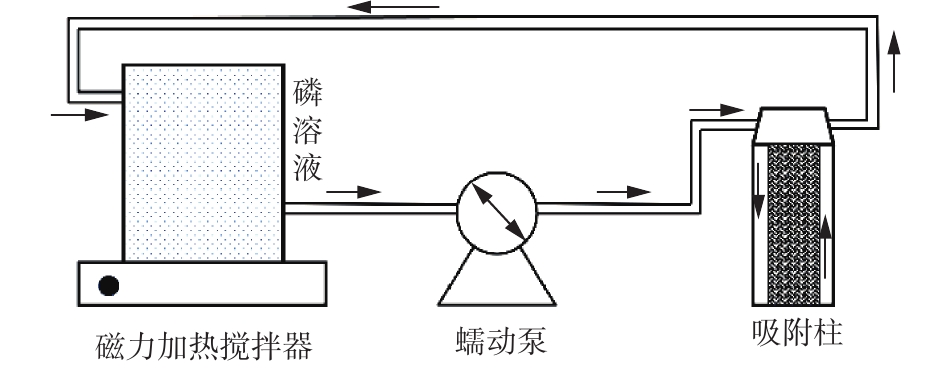
 下载:
下载:
